Barbie Fashion
- Thea Hwang
- Mar 16
- 2 min read
Yesterday, I went to see the Barbie®: A Cultural Icon exhibit at the Museum of Arts and Design in New York City. This exhibit explored the Mattel doll Barbie’s pop cultural impact and 65-year history through a display of over 250 vintage dolls, advertisements, life-size fashion designs, and more.
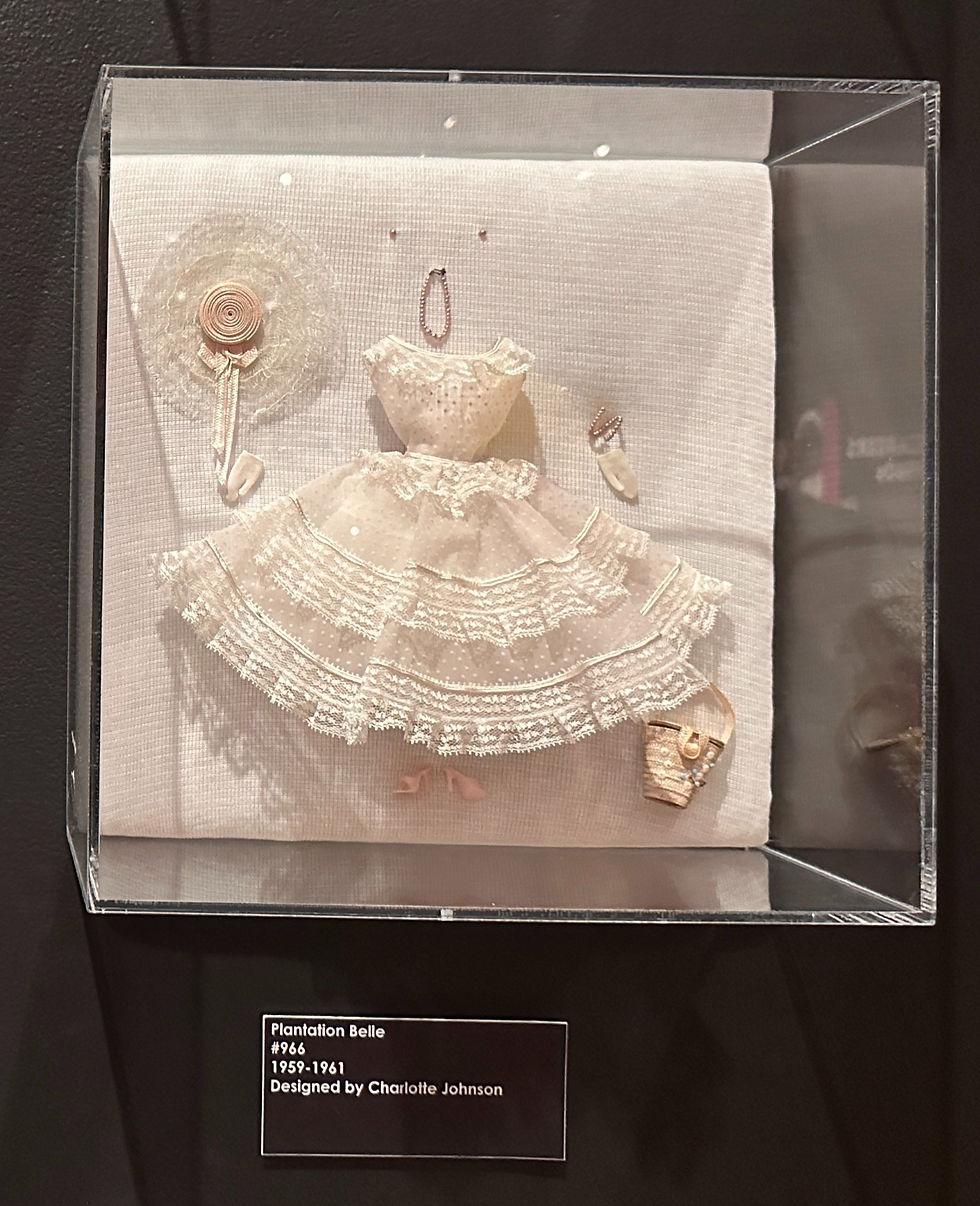
Due to Barbie’s lengthy history, there are outfits worn by Barbie that would now be regarded as quite problematic, despite how pretty they may be. For example, in Barbie's 22 original outfits, one of them is called “Plantation Belle.”

Another segment in the exhibit dubbed “International” was meant to represent in Barbie fashion a move away from a Western point of view toward an embrace of multiculturalism. According to the exhibit notes for this line: “They borrowed handmade folk styles from non-Western cultures in their quest for authenticity–a quality that was lost to mass-produced, ready-made clothing.” While this line was representative of popular styles and fairly forward for its time, it was also vague about the origins of its motivations. Basically, none of the outfits specified which cultures they were inspired by, causing the whole line to just look vaguely hippy-ish.
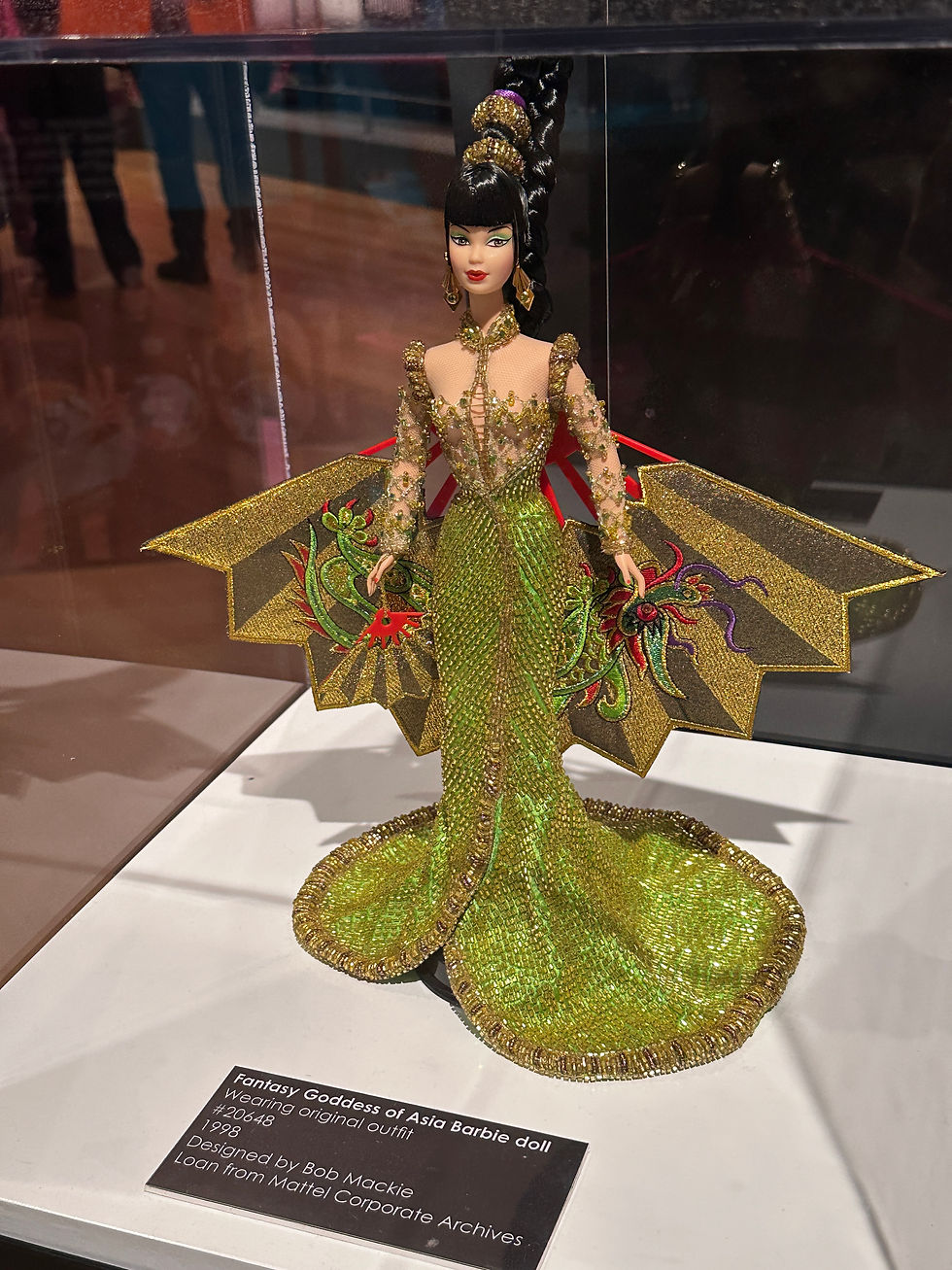
The designer Bob Mackie’s collaboration with Barbie also had a similar issue. Entitled “International Beauty,” this line was intended to celebrate worldwide beauty in Bob Mackie’s signature dramatic fantasy style. This was a first-time collaboration on a special collector doll, and Bob Mackie and Barbie continue to work together to this day, having made over 50 collectible dolls. While the designs in this line are gorgeous, its three dolls on display are called “Fantasy Goddess of Asia Barbie,” “Fantasy Goddess of Africa Barbie,” and “Fantasy Goddess of Arctic Barbie.”
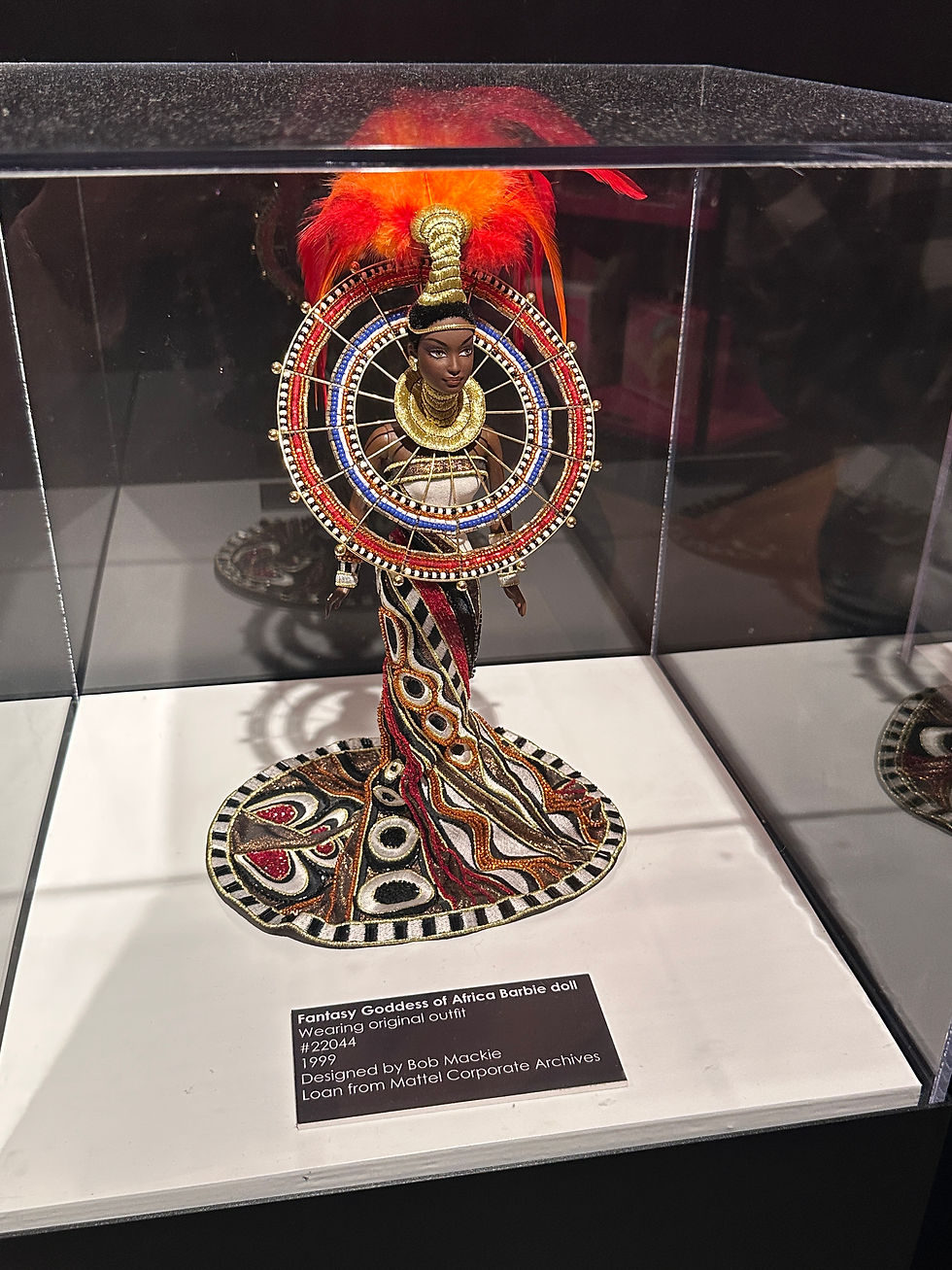
As much as I loved these designs, citing an entire continent as inspiration misses all the different communities, each with their own styles, on those continents. While those dolls do date from 1990, there was no acknowledgement of this problematic oversimplification.
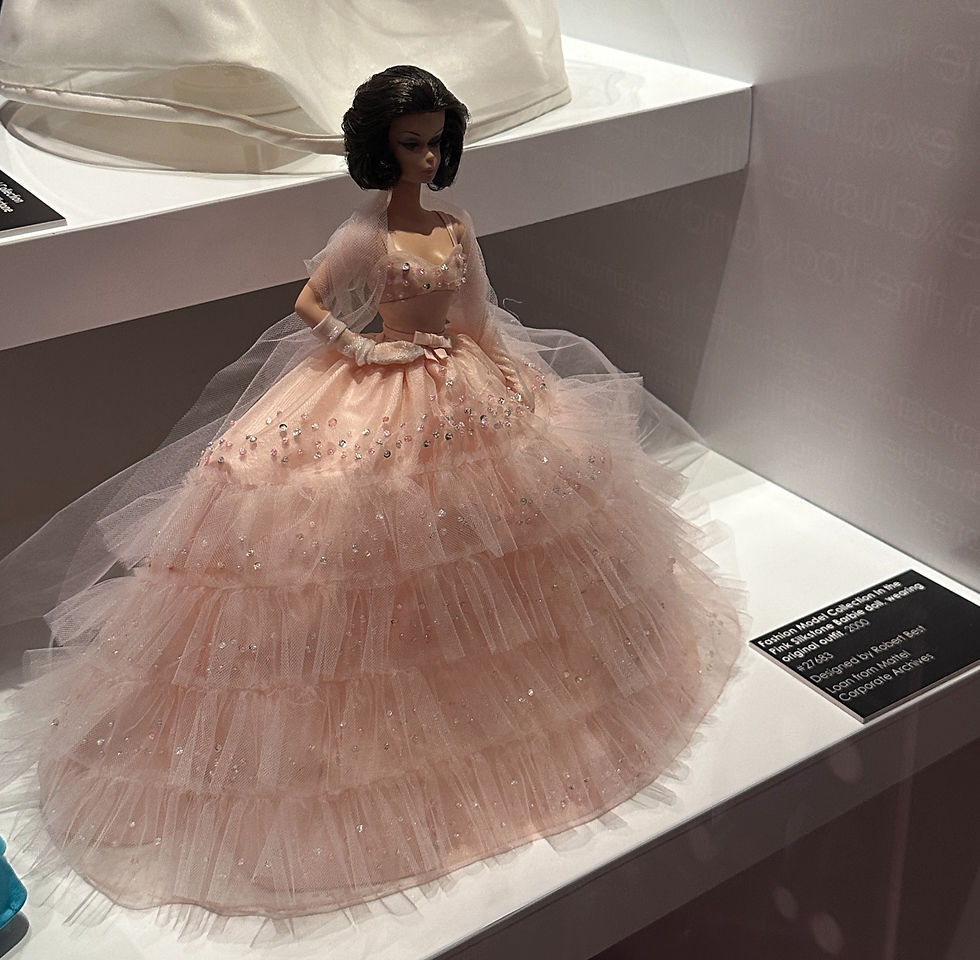
Even with these problematic parts, I enjoyed learning a little more on the history of Barbie, seeing the evolution of the doll over time, and admiring her great style! Some of my favorite Barbie outfits were from the “Fashion Model” collection: “Preferably Pink Barbie” (below image, bottom left), “Best to a Tea Silkstone Barbie” (bottom middle), and “Pink Silkstone Barbie” (image on right).
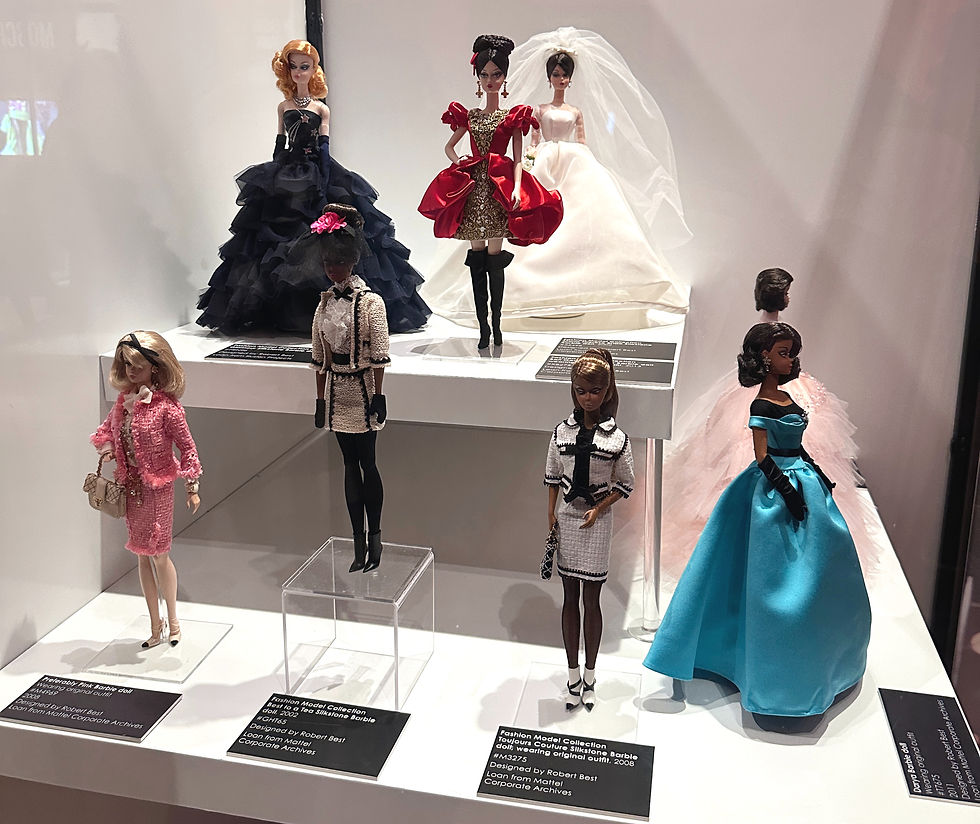




Comentarios